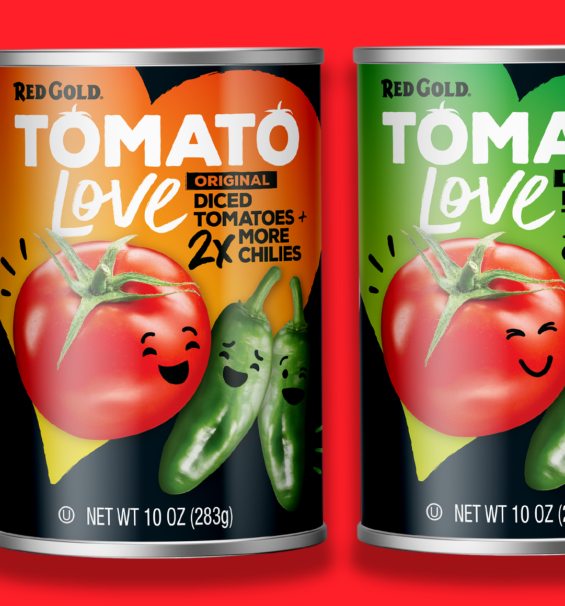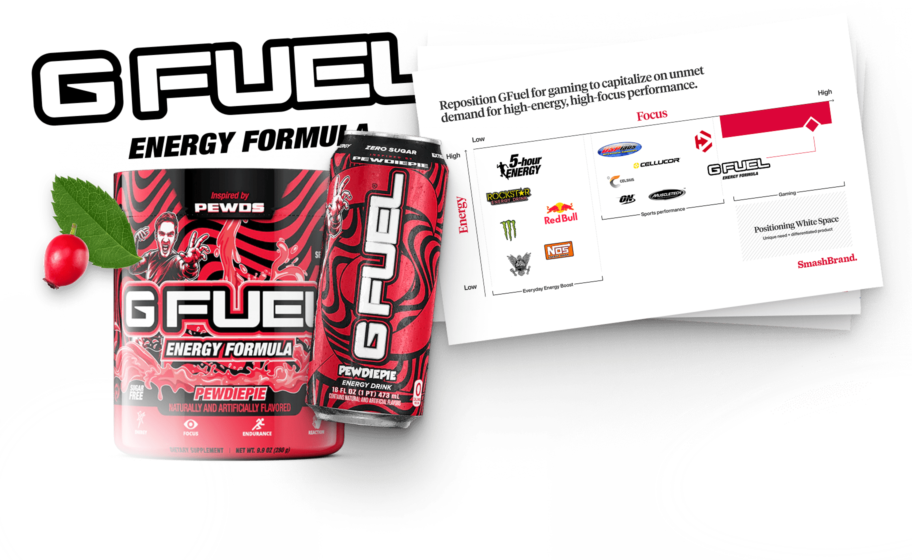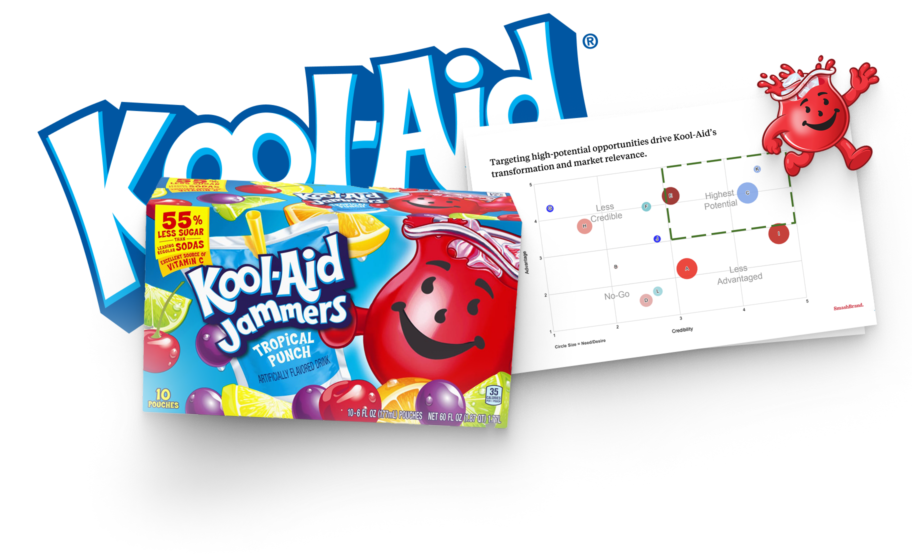What brands come to mind when thinking about energy drinks? Odds are, Red Bull or Monster come to mind without hesitation. Now, picture crispy fried chicken, and there’s a high chance you thought of KFC. That’s consumer positioning at work. When done right, brand positioning influences preference and defines the category.
If your brand isn’t the first to come to mind for your target audience, or the one they reach for on the shelf, your positioning strategy isn’t doing its job. Too many brands rely on a brand positioning statement that sounds clever but lacks practical execution and performance impact. Weak product positioning blurs into the noise. Poor market positioning kills momentum before a single purchase.
In this article, you’ll learn how to build a product positioning strategy that sells, a brand positioning strategy rooted in real behavior, and a positioning statement that connects instantly. This isn’t theory, but product marketing built to move. Let’s get to work.
What is consumer positioning?
Consumer positioning is the message that tells shoppers who you are and why you matter instantly. Brands must not confuse consumer positioning with a tagline or a mission statement, because it is what drives split-second decisions when a consumer chooses one product over another.
Your brand position must speak directly to your target market and reflect how they think and shop. That’s the core of effective brand positioning: it aligns with consumer behavior, not internal wishful thinking. And when done right, it shapes your entire marketing strategy, giving your brand clarity, confidence, and a competitive edge.
Why consumer positioning matters.
If your brand positioning is unclear, your brand will be forgotten. Effective positioning helps a potential customer understand why your product fits their life better than any other product on the shelf. Without solid market research, your brand positioning strategy is built on assumptions rather than insight.
The same goes for product positioning. Your packaging, messaging, and product marketing miss the moment when customers decide what to put in their cart. The proper consumer positioning bridges the gap between brand and buyer. It turns casual consumers into loyal ones and products into category leaders.
How consumers decide on products.
When a consumer picks up a product or scrolls past it, they’re not consciously analyzing your brand story. But inside the consumer’s mind, a fast decision is being made. And it comes down to two forces: logic and emotion. At SmashBrand, we refer to it as the head and the heart.
The head is where performance, value, and proof live. It’s where price positioning, product benefits, and claims provide the consumer with a rationale for their decision. It answers: “Does this do what I need at a fair price?” The heart is where identity, trust, and emotion sit. It is all about how a brand makes the consumer feel aligned, understood, or inspired. In a competitive landscape, that connection is a gold mine.
Every successful brand positioning strategy combines both. It uses a solid framework to guide every element of the marketing effort, from packaging to storytelling. It delivers marketing messages that address genuine human needs, while also providing evidence and results.
This dual impact is critical in low-involvement categories, where consumers default to habit, emotional cues, or a quick sense of value. Brands that master this balance often rely on real-world data, including live customer feedback, testing, and data-informed marketing campaigns. And when it’s time for a brand repositioning, this “head and heart” lens ensures the message sticks.
Consumer positioning built for real people.
Effective consumer positioning starts with the way people shop. No one thinks about your mission statement on the shelf or in a scroll. They’re solving a problem, satisfying a craving, or making a fast, instinctive choice. That’s why an effective product positioning is grounded in shopper behavior, not creative brainstorming.
Innovative brands utilize a brand positioning framework centered on “jobs to be done,” the actual, often unspoken tasks that consumers are hiring your product to accomplish. Combine that with clear purchase drivers, and your brand shows up with purpose. This is how you shape consumer perception and win consumer preference when it counts most.
For instance, brands should use benefit positioning that speaks directly to what someone needs, such as better taste, more energy, or less sugar, because it cuts through faster than any bloated marketing campaign. Winning brands have a specific target audience. They speak in a particular moment, in the consumer’s mind.
Positioning is a repeatable part of your brand strategy. It becomes sharper with real-world signals, such as customer feedback, performance metrics, and iterative marketing efforts.
Test your consumer positioning before you launch.
There is a higher risk of failure if you rely solely on internal opinions to validate your positioning. What sounds strong in a creative review means nothing if it doesn’t perform in the actual environment. That’s why every successful brand requires a rigorous, shopper-realistic test before going live.
SmashBrand’s PREformance® testing is built for this exact moment. It puts your entire brand positioning framework into a real-world retail context, where decisions are made in seconds, and delivers data that drives clarity, credibility, and conversions.
Does the message land instantly?
Clarity testing measures whether your brand’s positioning process effectively communicates the unique selling proposition to customers. Can a shopper tell what you are, who it’s for, and why it matters in under 3 seconds?
We measure how effectively your value proposition resonates, ensuring your message isn’t lost in the competitive landscape. If consumers hesitate or misinterpret the core message, it’s not ready for the shelf.
Do They Believe You?
Credibility testing gauges customer perception of your claims, tone, and brand voice. Does your positioning sound believable? Is your archetype development aligned with what consumers expect from your category?
This phase filters out internal bias. It uses direct customer feedback to identify red flags before your marketing campaign begins. If shoppers don’t trust the message, no amount of branding will save it.
Will They Choose You Over Competitors?
Conversion testing replicates real-world shelf competition, allowing consumers to make an informed choice between your brand and alternatives. It’s an accurate competitive analysis in action, demonstrating whether your message stands out in a crowded field. This is where the rubber meets the road.
It evaluates how well your marketing efforts perform under real pressure, revealing whether your positioning shifts preferences, drives trials, and earns purchases. PREformance® testing suite takes the guesswork out of positioning.
It’s about what moves people in the moment. And that’s the only signal that matters. Want to make smarter, creative decisions before launch? Test as if it were already on the shelf.
What Shapes Consumer Positioning for CPG Brands?
Consumer positioning is shaped long before a shopper reaches for a product. It’s influenced by what they believe, what they expect, what they see on the shelf, and how your brand responds to those triggers in real time.
These aren’t abstract forces. They’re tangible factors that determine whether your product gets picked up or passed over. Understanding them means building positioning that works in-market.
Purchase drivers.
A blend of logic and emotion drives every CPG decision. Functional purchase drivers such as convenience, taste, or ingredients appeal to the rational mind. Emotional drivers, such as identity, nostalgia, or lifestyle alignment, build loyalty. Positioning must appeal to both. Hit one without the other, and you’ll struggle to win both trial and repeats.
Category norms and competitive noise.
Every CPG category comes with customers’ expectations: what belongs on the front of pack, what claims matter, what aesthetics signal premium vs. value. Your positioning must be aware of those norms while breaking just enough rules to stand out. Too safe, and you fade. Too unfamiliar, and you get confused. Smart positioning threads the needle, striking a bold yet believable tone.
Shelf context and shopping behavior.
Consumers don’t shop your product in isolation. They make split-second decisions in busy aisles or distracted digital scrolls, so shelf context matters. Positioning that works on a mood board may not hold up in the wild. That’s why real-world testing is crucial; it shows whether your positioning captures attention fast and communicates instantly in real shopping environments.
Product format and packaging constraints.
Your product’s physical format, use case, and packaging design directly shape how you communicate your positioning. A single-serve snack bar has different storytelling real estate than a multi-pack of detergent pods. The positioning must adapt to the medium, incorporating design, claims hierarchy, and callouts that fit the format without compromising clarity.
Brand maturity and market awareness.
Startups and challenger brands need positioning that builds recognition and explains value fast. Legacy brands may need repositioning that refreshes without alienating loyalists. Where you are in the brand lifecycle matters, so does your current level of awareness. Are you defining the category or defending your turf? The strategy shifts accordingly.
Price tier and value perception.
Whether you’re a premium brand or a value-focused player, your positioning must match the price point. If your value proposition feels off, either too good to be true or not good enough, shoppers won’t bite. Excellent positioning reinforces the product’s value and gives buyers the confidence to make a purchase or save with confidence.
Why most consumer positioning strategies fail.
Most consumer positioning strategies fall apart for one simple reason: they’re built for the brand, not the buyer. Too often, positioning becomes a vanity project, crafted to sound clever in a boardroom but meaningless to the target customer standing in front of the shelf.
Instead of addressing customer needs, many brands try to say everything at once: heritage, mission, sustainability, taste, value, and premium. The result? A muddled message that doesn’t stick.
If your positioning doesn’t connect in three seconds or less, it gets ignored. And when your brand strategy lacks focus, even strong brand awareness won’t save it. Some go too narrow with niche positioning and lose scale. Others go broad and forget differentiation positioning entirely.
Many mistake convenience positioning for clarity, or quality positioning for a generic promise. Meanwhile, none of it reflects the actual reasons consumers choose one product over another. No amount of customer service, media spend, or packaging design will rescue a weak strategy.
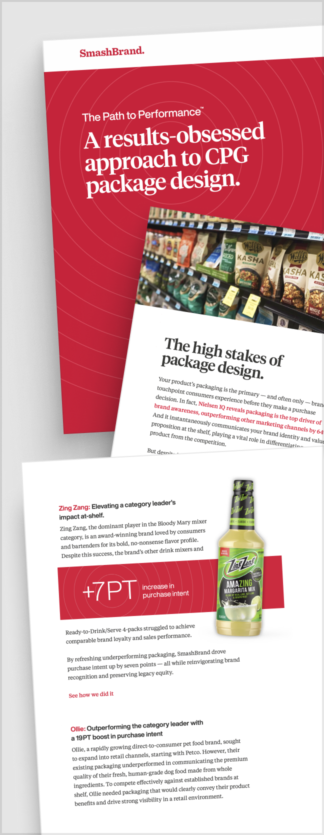
Path to Performance™
Taking a results-obsessed approach to CPG package design.
Discover how SmashBrand’s proprietary process, rooted in scientific principles, informed by data, and validated by your target audience, eliminates the guesswork from package design and delivers guaranteed results.
How SmashBrand builds consumer positioning that performs.
At SmashBrand, consumer positioning is a fast, objective, and proven process designed to outperform on the shelf. We work through a stage-gated workflow that keeps strategy aligned with shopper behavior at every step. What sets us apart? It’s the brand-side POV baked into how we think, test, and execute. Here’s our high-level framework:
Insights grounded in real-world behavior.
Every successful position starts with the truth. We begin with real-time shopper testing and behavioral data. This is where brand positioning research lives. Instead of relying on outdated personas or abstract attributes, we build a sharp picture of the consumer’s mind in buying moments.
We also map the competitive space using a custom-built brand positioning map, which shows where your product stands today and where it needs to move to achieve dominance.
A framework that connects.
Once we’ve gathered the insights, we translate them into a strategy that sells. This includes defining your value proposition, messaging pillars, and emotional and functional purchase drivers. Here, we utilize a purpose-built brand positioning template that locks in the key components of positioning your target audience, benefits, reasons to believe, and differentiation. This ensures every brand positioning component is aligned, from messaging to shelf presence.
Design built to move, not just look good.
Packaging design is a tool to drive conversion. Every visual element, from packaging to the claims hierarchy, is carefully crafted to reflect the brand’s positioning strategy. It’s not just about standing out. It’s about standing for something. Because we work as strategists and designers under one roof, the handoff between thinking and making is seamless—no time is lost, and no intent is lost. This integration enables us to move fast and stay sharp.
Proof before launch.
Before anything hits the shelf, we test it in-market through our PREformance® testing suite. Using real purchase simulations and consumer feedback, we validate that your position wins attention, earns trust, and drives conversion. If your brand can’t win on shelf, everything else is just theory.
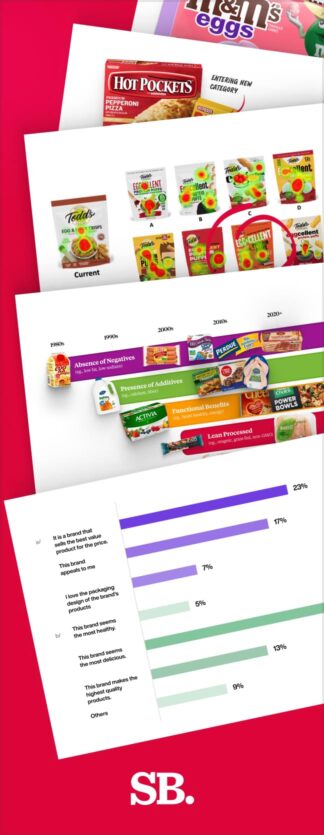
Nice Package
Don’t miss out on our monthly newsletter Nice Package!
Each month, we deliver a data-driven newsletter directly to your inbox, unpacking a critical topic in the FMCG & CPG industry.
"*" indicates required fields
Subscribe to
Nice Package.
A monthly newsletter that unpacks a critical topic in the FMCG & CPG industry.
Free Resource.

CPG product repositioning guide.
Explore the five undeniable signs your CPG product needs repositioning along with strategies for leveraging consumer insights for a guaranteed market lift.
Learn More About CPG product repositioning guide.
